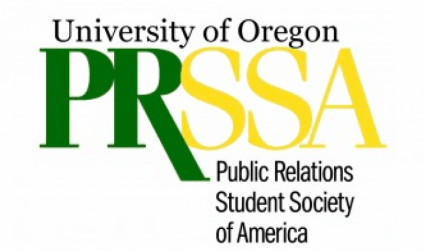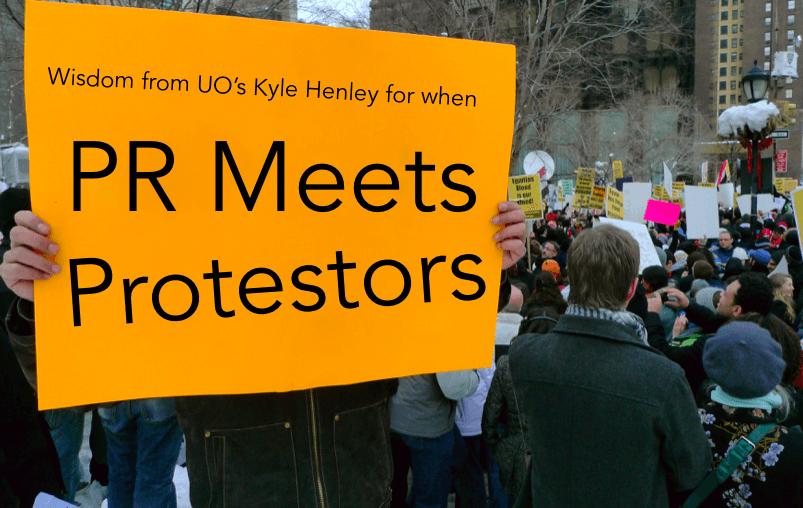By Lily Gordon
Protests are a quintessential part of democratic countries. Occupy Wall Street, the Civil Rights Movement, the Boston Tea Party— the good ol’ American protest has been proven to produce tangible change when addressing national policy or cultural issues. Perhaps the perfect Petri dish for protests and social activism is on a college campus. When a mass of people learning about the injustices of the world all live in one place, public demonstrations are bound to occur.

Dealing with protestors, or what strategic communicators so eloquently call “issues management,” isn’t exactly the highlight of most PR professionals’ week. I got the chance to sit down with Kyle Henley, the Vice President of Communications at the University of Oregon, and chat about the sometimes tricky topic of issue management on a college campus.
It seemed almost too fitting that on the way to Henley’s office I passed through a group of students from the UO Climate Justice League participating in a sit-in just a few feet from his door. Whereas in a large corporation the chief communications officer could stay in his or her corner office removed from demonstrators, a university is a small city. When neighbors are unhappy, they march right up to the offender’s front stoop.
Henley didn’t seem fazed by the guests in the atrium. He embodies his policy of keeping a level head when it comes to communicating. During our conversation, he mentioned countless morsels of PR wisdom, but a few core aspects stood out when it comes to approaching issues management. These are what I’m calling The Henley Keys to Communication Success.
Think ahead
Since the 1960s there have been loud student protests on American college campuses. “It’s not something we’re unaccustomed to dealing with,” says Henley. There are certain issues every university administration can anticipate— tuition, campus safety, feelings of inequality— and that makes it easier to develop proactive strategies. According to Henley the UO is a “well oiled machine” when it comes to controversy. Like any large corporation, the university’s communications team forecasts potential issues that could occur taking into consideration the student body’s demographics, upcoming changes, and other factors unique to the school.
Stay consistent
“What’s the challenge? What are the answers and information you’ll need? And how will you communicate it?” Henley says these are the three questions to ask when addressing any communications problem. PR often faces criticism for being “all spin,” but when facing social activists, a brand must decipher the facts in order to develop a realistic path forward. Once the truth is evident to brand communicators, which may or may not align with activists’ demands, clear and consistent messaging can follow.
Utilize experts
Henley admits he is the forty-five-year-old dad who really likes Facebook but doesn’t have the bandwidth to do the “other ones,” meaning Twitter, Snapchat, et cetera. He also acknowledges the major role social media plays in vocal student dissatisfaction. That’s why the university communications department has individuals who understand every in and out of these platforms tracking the conversation. Law enforcement even plays a role when it comes to monitoring the UO Yik Yak. The point is a person cannot become an expert on everything. A distinguishing characteristic of great PR professionals is that they can find the right experts and aren’t bothered by asking for assistance.
Be interesting
“Even if you have a job that you love, and I do, don’t let your job define you,” Henley said. “Find something you’re passionate about and invest in that.” Henley is a family man who enjoys cycling and cooking among other hobbies. Besides keeping a person sane, Henley notes the valuable perspective gained by having a fulfilling life outside of the office. PR is all about balance: what the brand wants compared to what consumers are demanding, having an online presence but also remaining personable, bringing creativity into the mix while keeping messaging accurate and clear. Balance is ultimately the key to professional communicating success be it personally, when dealing with a long-term branding project, or even when protestors come calling.




